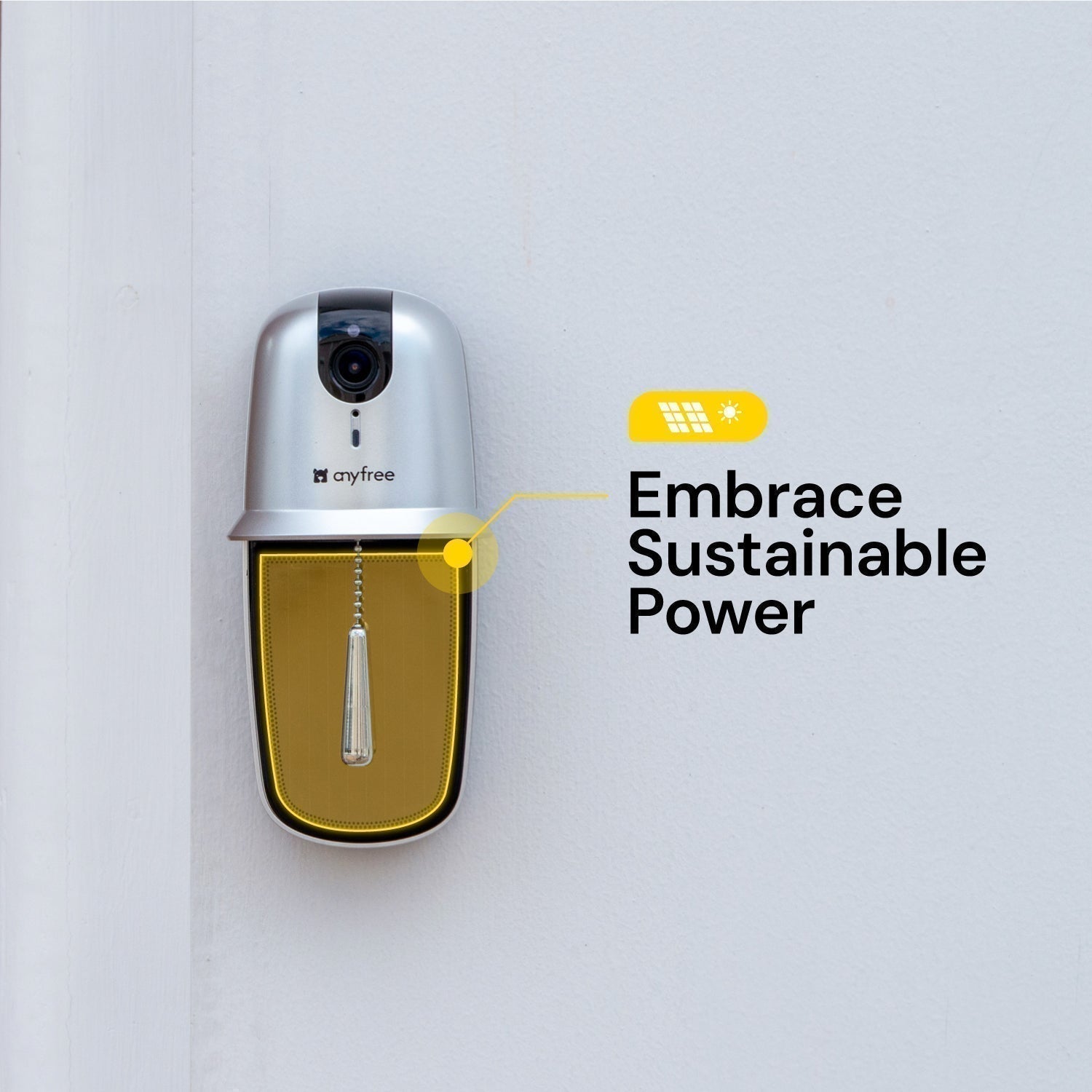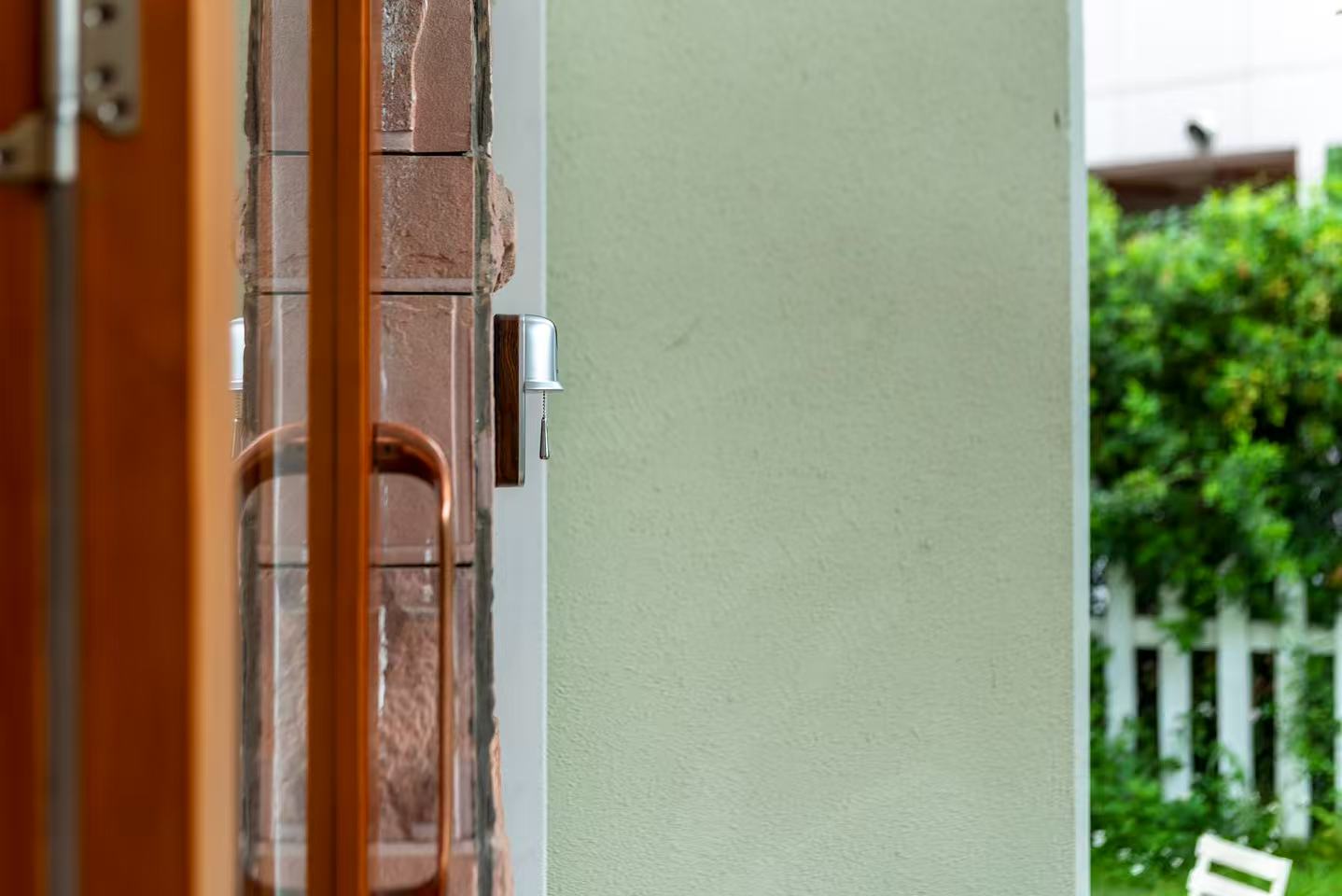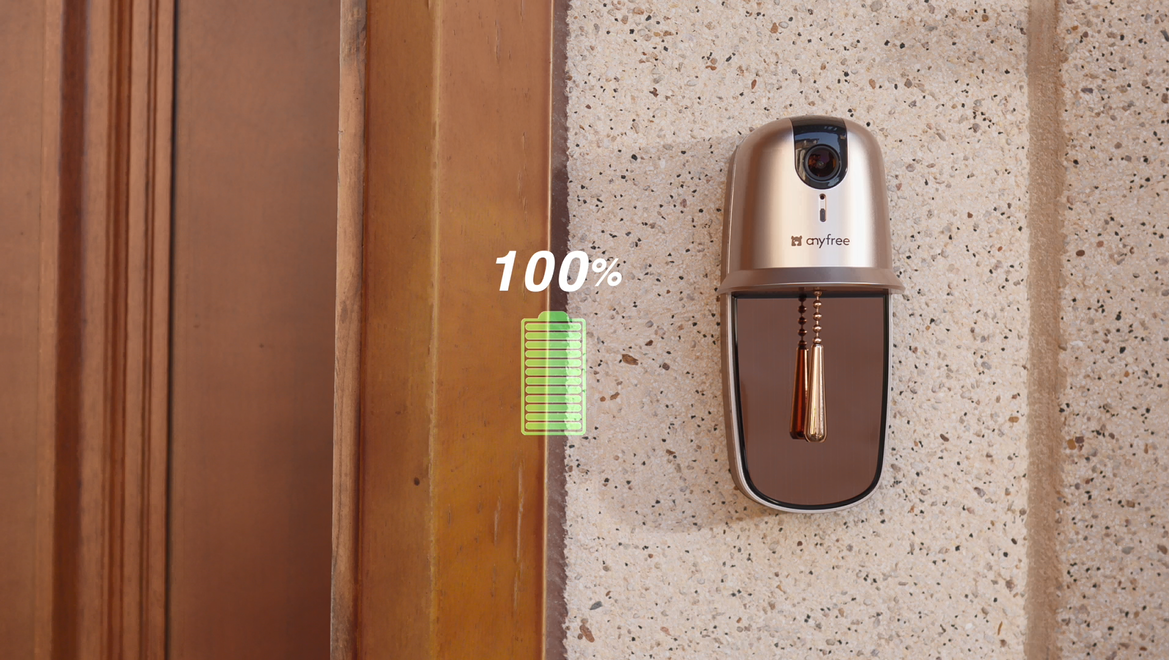- Top Benefits of Using Solar Energy in Home Security
- Solar Power in Action: Real-World Applications for Modern Homes
- Core Applications of Solar-Powered Home Security
- Why Solar Power is the Perfect Match for Smart Doorbells
- How Solar Panels Enhance Your anyfree Doorbell Experience
- FAQs About anyfree's Solar-Powered Feature
In today's fast-paced world of innovation, smart home technology is reshaping how we live and protect our homes. At the same time, the need for cleaner, more independent energy solutions has never been greater. Integrating solar power, a renewable, cost-effective energy source, is redefining what it means to have a smart, secure, and sustainable future-proof home.
From environmental protection to economic benefits, solar energy brings many advantages to the smart home. Whether it's a home security system or a specific device such as the anyfree Hello doorbell, solar energy can provide long-lasting, stable power support, so say goodbye to the trouble of frequent charging. In this article, we'll examine how these systems are used in real-life scenarios, why solar power is the best partner for smart doorbells and the common questions you're most concerned about.
Now is the perfect time to embrace a "smart, sustainable and secure" lifestyle.
Top Benefits of Using Solar Energy in Home Security
With the growing popularity of sustainable living concepts, individuals are increasingly prioritizing reducing their reliance on fossil fuels and transitioning to solar energy. Environmental protection and economic benefits are two pivotal factors driving the safe and reliable adoption of solar energy in households.

Environmental
1. Carbon Emission Reduction
-
- Solar-powered devices have significantly improved the sustainability of remote and off-grid areas, completely eliminating dependence on fossil fuel systems. Unlike traditional backup generators, which rely on pollution, solar technology provides carbon neutrality resilience, allowing communities to effectively protect their space without compromising environmental integrity.
2. Scalable Sustainability
-
- The modular system allows for environmentally friendly expansion. Users can add solar-compatible devices, such as body-sensor lighting and environmental monitoring, according to their needs without increasing their environmental impact.
3. Climate-Conscious Security
-
- Integrating renewable energy into everyday safety practices enhances personal protection and reflects a shared responsibility for the environment, achieving a harmonious balance between individual security and ecological sustainability.
Key takeaway: Solar security systems turn our homes into active contributors to global sustainability while maintaining reliability.

Financial
1. Long-Term Cost Savings
After the initial setup, solar systems offer long-term savings through reduced electricity bills and low operating costs. Once installed, solar-powered devices like smart doorbells can run virtually cost-free.
- Reduction in Utility Bills
Solar energy can significantly lower or eliminate monthly electricity expenses. Solar power offsets high utility expenses in the U.S., where average consumption reaches nearly 900 kWh monthly, especially in states with elevated electricity rates.
- Protection from Rising Energy Prices
Solar energy has provided a stable marginal cost over the decades, shielding users from energy market volatility and future price hikes. This long-term price stability ensures predictable energy expenses and offers financial protection against inflation and rising energy costs.
- Minimal Maintenance Costs
Solar energy devices are engineered to endure outdoor conditions. Solar panels are designed to withstand various weather phenomena, including wind, rain, and snow. Typically, they necessitate only routine visual inspections and natural cleaning by rainwater, reducing long-term maintenance requirements and ensuring cost-effectiveness.
2. Government Incentives & Subsidies
Government incentives such as the Rooftop Solar Programme Phase II have enhanced the financial appeal of solar-powered home security systems by offering fixed subsidies and tax credits for residential installations. These programs have significantly reduced the upfront costs of solar-driven devices such as solar-powered cameras, motion sensors, and smart doorbells while eliminating ongoing electricity expenses and accelerating payback periods. Reducing initial investment and achieving long-term energy savings creates a compounded return on investment (ROI), making solar-integrated safe and economically strategic.
Solar Power in Action: Real-World Applications for Modern Homes
Environmental responsibility and financial savings are the core drivers for modern families to turn to solar homes. Not only does it reflect a focus on sustainability, it is also a wise choice for efficiency and cost-effectiveness. Solar security systems stand out among compelling real-world applications, providing consistent and reliable home security through solar energy. This solution combines energy savings, lower electricity bills and increased security, delivering environmental and practical value.

Core Applications of Solar-Powered Home Security
- Intruder Detection & Prevention
- Infrared (IR) sensors trigger alarms and send instant app alerts for real-time alerts to smartphones via apps, enabling rapid threat response.
- Solar-powered cameras and motion sensors provide 24/7 surveillance, even in off-grid cabins or remote properties, eliminating reliance on unstable power grids.
- Fire & Safety Automation
- Smoke/fire detectors activate buzzers and push mobile emergency notifications, enabling rapid emergency action during fires or gas leaks.
- In the event of a power outage or disaster, solar energy ensures that security systems continue to operate, providing critical protection in the event of a failure in the traditional power grid.
- Remote Control & Energy Optimization
- Manage door locks, lighting, and home appliances through a smartphone app that reduces energy waste by automating usage based on occupancy or daylight availability.
- Integrate a microcontroller to create routines synchronizing with the solar power cycle, such as dimming lights when battery reserves are low.
Why Solar Power is the Perfect Match for Smart Doorbells
Smart doorbells are the frontline of home security. They need constant power to monitor packages, greet guests, and alert you to suspicious activity. But here’s the problem: even the best Wi-Fi doorbell is useless if its battery dies.
Solar solves this. A small, discreet solar panel keeps your doorbell charged 24/7, rain or shine. No downtime. No interruptions. Just seamless protection that syncs perfectly with your smart home ecosystem.
How Solar Panels Enhance Your anyfree Doorbell Experience
- Extend battery life
The anyfree Hello doorbell integrates a built-in solar panel that effortlessly replenishes power. Whether in direct sunlight or indoor lighting, the doorbell uses energy efficiently, greatly reducing the need for manual charging.
2. Flexible and easy installation
The anyfree Hello Doorbell is designed with flexibility, providing wired and wireless installation options. It takes less than 10 minutes to set up and is completely removable, making it perfect for renters or those who prefer temporary installations. Simply install the device, connect to Wi-Fi, and enjoy instant smart home integration.

3. Eco-friendly design
Anyfree emphasizes the concept of sustainable development in product design. By utilizing renewable solar energy, Hello Doorbell has built-in solar panels, reducing dependence on fossil fuels and lowering long-term energy costs. In addition, its durable structure avoids the waste of disposable batteries, making it a wise choice for environmentally friendly households.
4. Uninterrupted Performance
Power outage? Overcast? That's all right. Anyfree Hello Doorbell's advanced perovskite solar technology ensures all-weather operation even at night. Its IPX5 waterproof rating ensures elasticity in harsh weather conditions, while the absence of moving parts minimizes maintenance to the greatest extent possible.
FAQs About anyfree's Solar-Powered Feature
Q: Will the built-in solar panel work in cloudy or rainy climates?
Yes! The solar panel is designed to operate effectively in most weather conditions. While direct sunlight maximizes charging efficiency, it can still generate power during cloudy or rainy periods. However, extended low-light conditions may require manual charging via USB.
Q: Can the doorbell rely solely on solar power?
The solar panel extends the doorbell’s battery life but may not fully eliminate manual charging in all scenarios. Under optimal conditions, installed with 4–6 hours of daily direct sunlight and minimal motion triggers, solar power can sustain the battery level. However, in areas with limited sunlight or high activity (e.g., frequent alerts or recordings), periodic manual charging via USB is recommended to ensure uninterrupted operation.
Note: Environmental factors and usage intensity significantly impact battery performance.
Q: Is the device durable in extreme weather?
Absolutely! Built with an IPX5 waterproof rating and rugged materials, the doorbell withstands heavy rain, snow, dust, and extreme temperatures (-20°C to 70°C). It’s engineered for year-round reliability.
Note: Extreme temperatures or frequent activity may slightly alter battery performance.
Q: Does the solar feature require maintenance?
Minimal maintenance is required. Simply wipe the solar panel occasionally to remove dust, debris, or snow, ensuring optimal energy absorption. No complex upkeep is needed.
Q: How does installation location affect charging?
Installation location is critical. For best results, position the doorbell where the solar panel receives direct sunlight for 4–6 hours daily. Avoid shaded areas (e.g., under eaves or trees). We recommend using solar power as a supplement to the battery for consistent performance.
Q: How long does a full charge take?
Under ideal sunlight with minimal activity, the solar panel fully charges the battery in 6–8 hours. In low-light conditions, manual charging via USB takes approximately 3–4 hours.
Note: Solar input typically offsets standby power consumption. However, frequent alerts, recordings, or live streaming may exceed the solar replenishment rate, leading to gradual battery drain.





Hinterlasse einen Kommentar
Diese Website ist durch hCaptcha geschützt und es gelten die allgemeinen Geschäftsbedingungen und Datenschutzbestimmungen von hCaptcha.